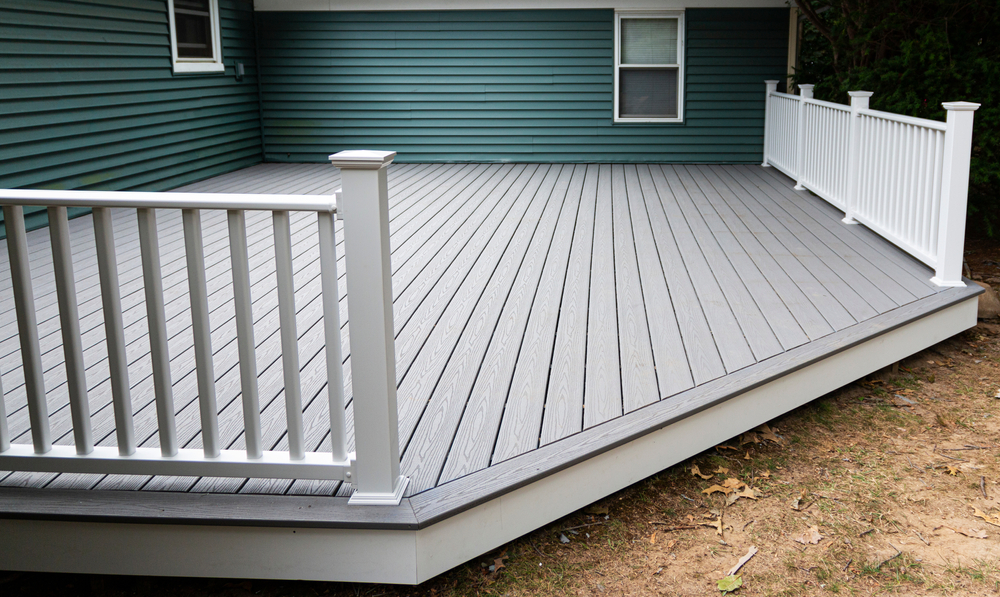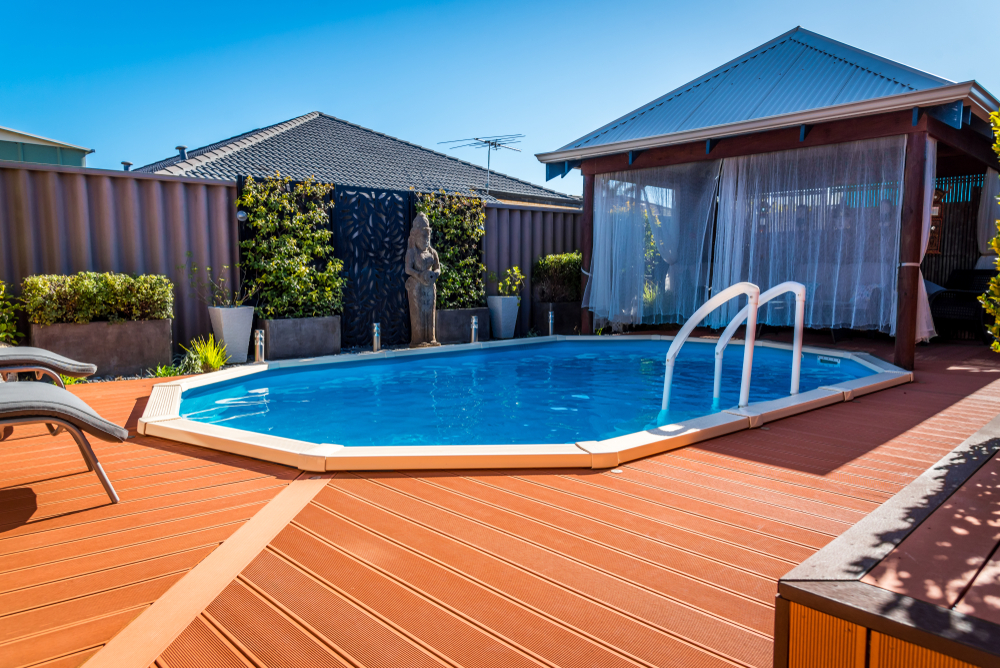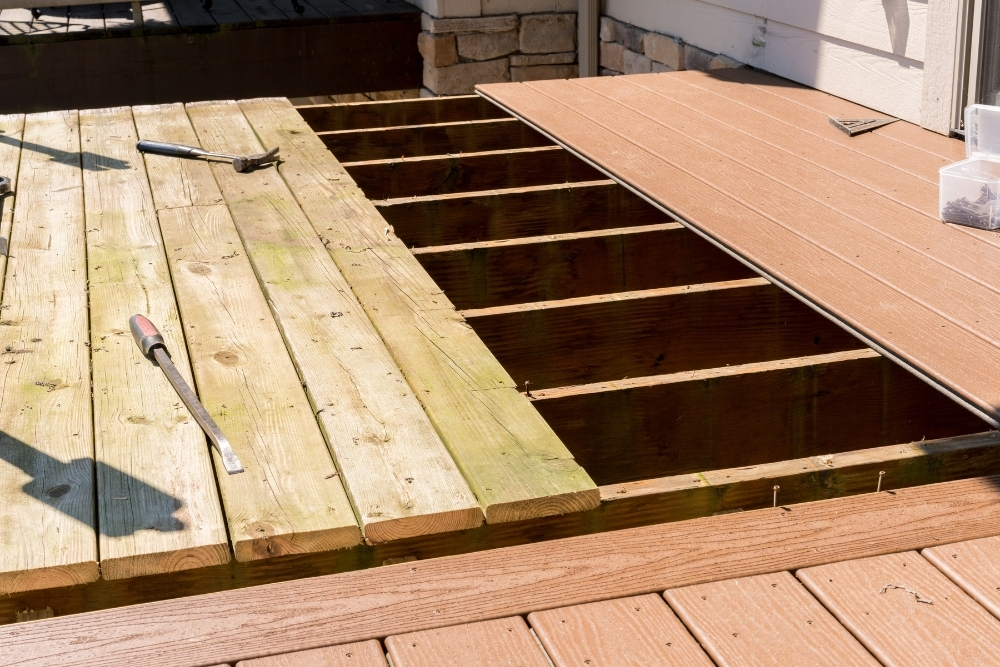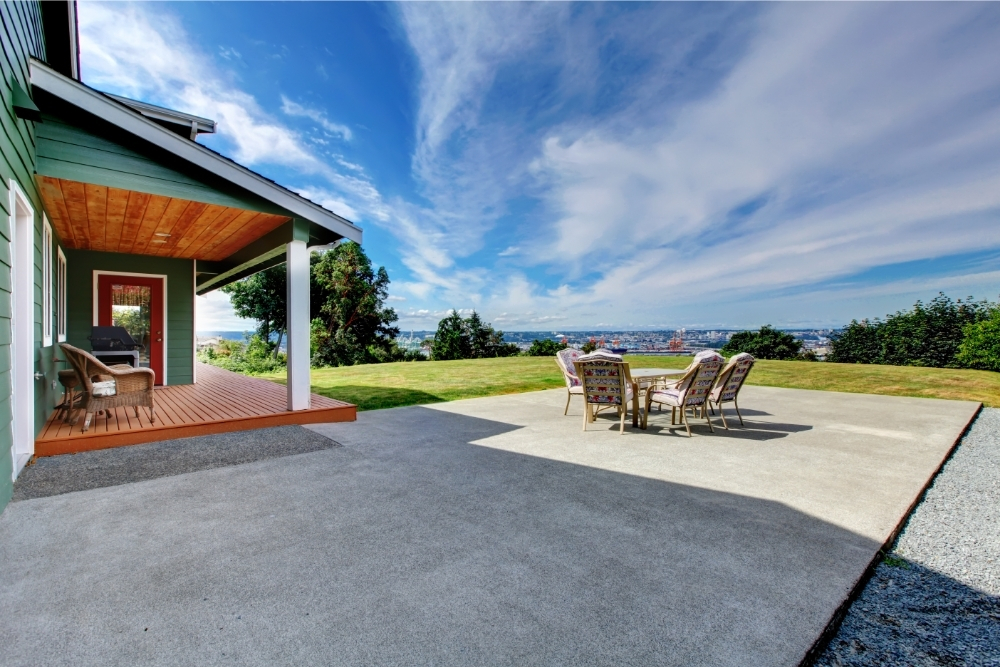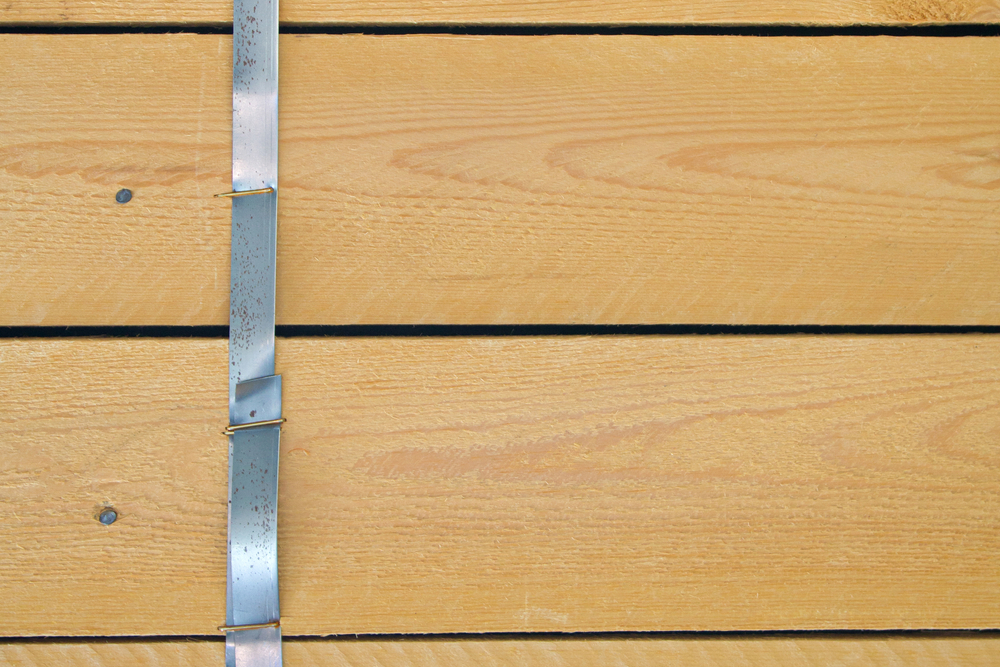The thought of building your own decking from the ground up, if you’re not a time-served carpenter and haven’t spent any time working with contractors, can be a little frightening.
In fact, it can be terrifying and trying to figure out exactly how to do it and everything that you’ll need in order to ensure that you do the job properly and safely can keep you awake at night. We understand how you feel and we know what it’s like because we’ve been where you are right now.
But it doesn’t have to be that way, and as long as you’ve planned the build properly and know exactly what you’re going to do at each and every stage of the assembly, you can relax and enjoy the experience and be content in the knowledge that you’ll be able to appreciate the fruits of your labor for years to come.
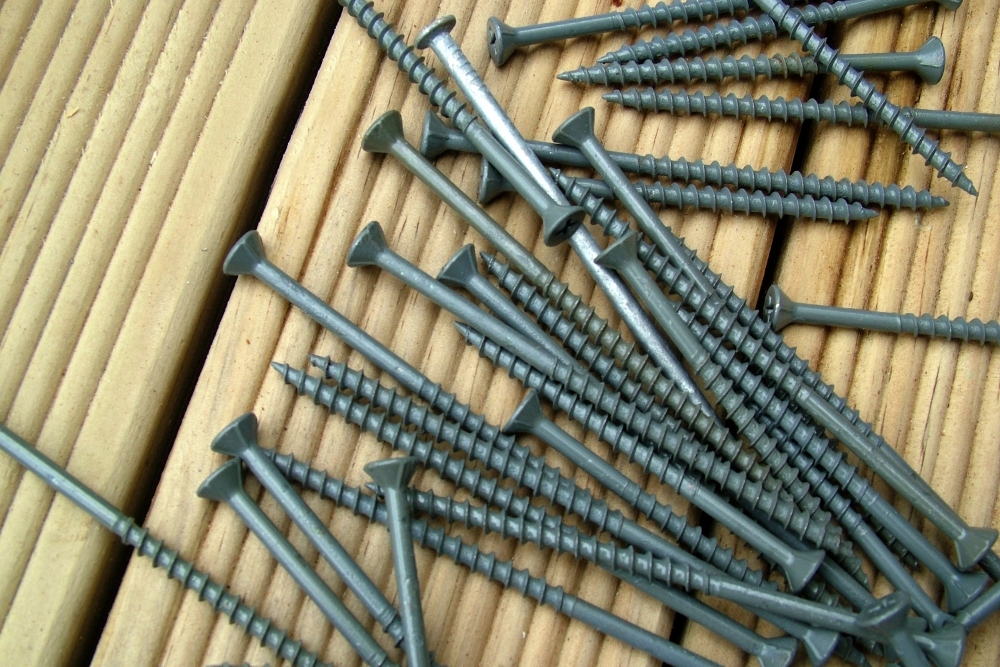
Right now, you’re probably thinking something along the lines of “That’s easy for you to say, you’ve already built your own decking” and that’s true, we have. We’ve also built decking for our neighbors, and as it hasn’t fallen down and looks pretty good we know what we’re talking about.
And that’s why we’re going to guide you through one of the most basic, important, and all too often forgotten by professionals and amateurs alike rules of deck building, and that’s how many screws you’ll need to build your decking and how and when to use them.
Screws vs. Nails
Let’s start by clearing the air and addressing the whole nails or screws and which you should use for decking conundrum. If you’re going to be building your decking from scratch, you’re going to need to use both, but you should only use screws to attach the decking to the frame.
While there isn’t any set rule that states that you can’t use nails to attach decking boards to the frame, screws will provide a much more stable, safe, and secure platform for you to walk and lounge around on, which is why most carpenters and contractors use them.
Nails, on the other hand, are used to build the decking frame, as they provide a much more solid finish, and while they can work themselves loose from decking boards, and end up becoming tripping hazards, the same isn’t true of the frame.
Besides, you can always hammer nails back into place in the frame without worrying about anyone stepping, or catching themselves on any that have started to work their way loose.
Screws And Decking – How Many Do You Need And How Do You Use Them
The simple answer is, it all depends on how big your decking is going to be, how many boards you’re going to use, and how long and wide they are.
You’ll also have to figure deck board spacing into your screw based equations (don’t worry, it isn’t like algebra, and the equations that we’re talking about aren’t unnecessarily complicated and won’t make your brain melt when you start thinking about them), as spacing is fundamental to deck construction.
So, before we go any further, we’re going to briefly explain why you’ll need to include a gap between your decking boards, especially if you’re using composite boards.
The space allows for the expansion of and contraction of the boards that’s caused by rainfall and sunshine, both of which can, and will cause the boards to expand and contract and the gaps between the boards (usually five or six millimeters) allow them to do so without causing any unwanted and unneeded damage.
The spacing will directly affect the number of boards that you’re going to need, and the number of boards you need directly affects the number of nails that you’ll need for your decking. Every detail is important, so don’t ignore or brush over anything.
You’ll also need to factor in the number of flooring and rim joists that the frame that you’re building has, and the size of the decking boards that you’re going to use. Do you want to use wide boards or slightly narrower boards? How do you want your decking to look when it’s finished? Do you want to use six or eight-inch wide boards?
As we’ve already mentioned, detail is all-important when it comes to actually figuring out many screws you’ll need to secure your decking boards to your decking.
The Magic Number
When you’ve finally determined how many boards you’re going to need and where and how you’ll be fixing them to the joists on your frame, you can then calculate exactly how many screws you’re going to need to secure them in place. And believe it or not, there’s an accepted rule of thumb for many screws you’ll need per board to safely attach them to the joists.
Every decking board should be attached to a flooring joist by two screws, and to a rim joist by three. So, once you know how many boards you’re going to need, and how you’re going to attach them to the joists, it’s relatively easy to calculate exactly how many screws you’ll need.
Oh, and a tip that we were given by a carpenter before we built our decking, which was a blessing in disguise, was to always add ten screws to the final number. Why? Because screws have a habit of going missing while you’re in the middle of a job, and it’s always better to have too many instead of discovering that you don’t have enough left to finish the job when you’re about to lay your last board.
Fixing The Boards In Place
Screw placement is, again, believe it or not, a thing that you’ll need to consider.
Armed with your bag of decking screws (yes, they’re an actual thing ask your local hardware store clerk about them), and making sure that you use two screws to attach each board to every flooring joists (and three for rim joists), the screws should be placed twenty millimeters from the edges of the boards to avoid any possibility that they might splinter when you’re attaching them to the decking frame.
And it really is, as a much wiser man than us once said, that simple and straightforward.

